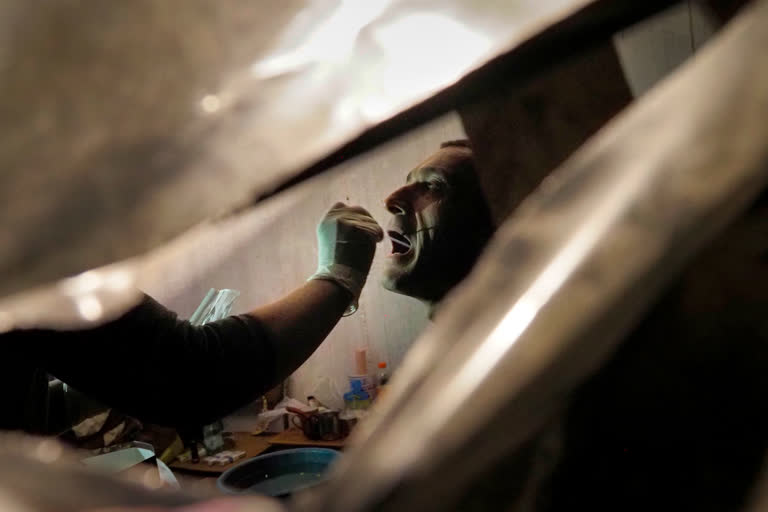Stepanakert: People infected with the coronavirus pack into cold basements along with the healthy to hide from artillery fire in Nagorno-Karabakh, while doctors who have tested positive do surgery on those wounded in the shelling. These are the grim realities of the pandemic in a region beset by weeks of heavy fighting.
Nagorno-Karabakh, which lies within Azerbaijan but has been under the control of ethnic Armenian forces backed by Armenia for more than a quarter-century, is facing the largest escalation of hostilities since a war there ended in 1994. In just over three weeks, hundreds of people have been killed. Two attempts at cease-fires have failed to stop the conflict.
The fighting has diverted the region's scarce resources from containing the outbreak, which spread unchecked during the first two weeks of fighting that began on Sept. 27.
"Almost everyone got infected, some had it in a light form and others in a more serious one," Malvina Badalyan, chief doctor at the infectious disease clinic in the regional capital of Stepanakert, said of health workers in the region.
Read also: Armenia, Azerbaijan report violations of new ceasefire
But in the middle of a war, with wounded people flooding into hospitals, there's nothing to do but keep working.
"Many doctors and nurses knew that they were infected, but they kept mum about it," said Ararat Ohanjanyan, the health minister for Nagorno-Karabakh's regional government. "They may lie down in a corner to bring the fever down and then get up and continue to perform surgeries."
"No one has the right now to step aside," he added.
Read also: Explained: Widening Armenia, Azerbaijan conflict
When the latest escalation of fighting started, medical workers had no time or resources to deal with the outbreak, Ohanjanyan said.
"We didn't have time to track down those infected while Stepanakert came under heavy shelling, and it allowed contagion to spread," he said.
Ohanjanayan himself tested positive for the virus just over a week ago — and he, too, has continued working despite running a fever and fighting pneumonia.
In the past week, the shelling of Stepanakert has become less intense, and ambulance crews have finally been able to visit shelters and basements to track down the sick, Ohanjanyan said, adding that regular testing and isolation of the infected has resumed.
Patients in the most serious condition have been sent to Armenia, while others have been admitted to hospitals or received treatment at their homes in the region.
But Ohanjanyan said authorities still don't have a good handle on how many people are infected.
Armenia, which supports the separatist region via a land corridor, has also seen a sharp increase in cases over the past weeks. The seven-day rolling average of daily new infections has nearly tripled since early October to 44 per 100,000 people on Oct. 20.
As Nagorno-Karabakh's medical system faced a massive challenge, regular residents and health workers alike volunteered to deliver medicine to people hiding in basements and to help track down those who had become infected.
Aram Gregorian, a doctor who volunteered to visit those seeking shelter from the shelling, said the cramped conditions in bunkers helped fuel the virus's spread.
"Constant shelling forces people to stay in tight groups in basements, and they can't self-isolate," he said. "Even those who have a fever and clinical signs of COVID-19 can't get treatment or go to the hospital."
Irina Musaelyan, a Stepanakert resident who was hiding in a basement along with her neighbors, said that the war overshadowed the virus outbreak.
"We just don't have time to think about coronavirus," she said.
Even at the infectious disease clinic in Stepanakert, coronavirus patients were forced to shelter in the basement.
Arevik Israelyan, who was visiting her husband who is hospitalized at the clinic with the virus, said the outbreak is challenge — but people mostly worry about the war.
"People get infected, but we will live through it," she said. "The main thing is that there is no war."
AP



